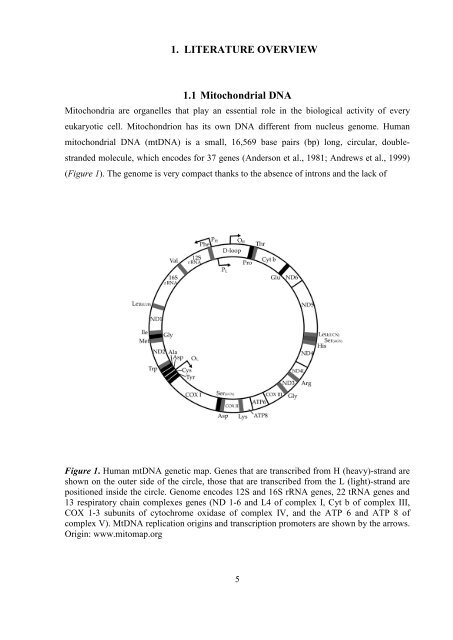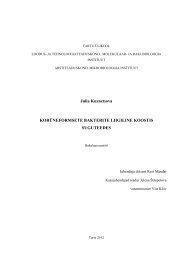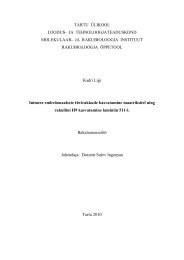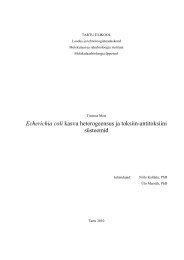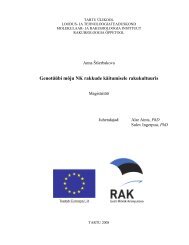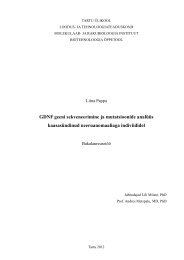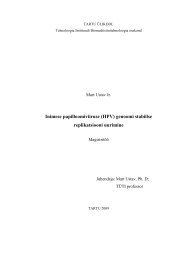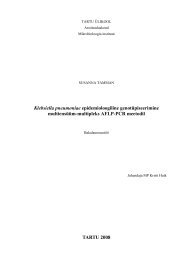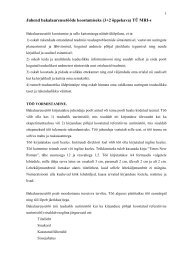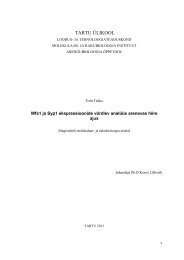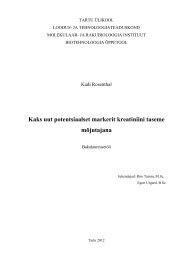Maternal variation in Huichol and Mixtec populations from Mexico
Maternal variation in Huichol and Mixtec populations from Mexico
Maternal variation in Huichol and Mixtec populations from Mexico
You also want an ePaper? Increase the reach of your titles
YUMPU automatically turns print PDFs into web optimized ePapers that Google loves.
1. LITERATURE OVERVIEW<br />
1.1 Mitochondrial DNA<br />
Mitochondria are organelles that play an essential role <strong>in</strong> the biological activity of every<br />
eukaryotic cell. Mitochondrion has its own DNA different <strong>from</strong> nucleus genome. Human<br />
mitochondrial DNA (mtDNA) is a small, 16,569 base pairs (bp) long, circular, doublestr<strong>and</strong>ed<br />
molecule, which encodes for 37 genes (Anderson et al., 1981; Andrews et al., 1999)<br />
(Figure 1). The genome is very compact thanks to the absence of <strong>in</strong>trons <strong>and</strong> the lack of<br />
Figure 1. Human mtDNA genetic map. Genes that are transcribed <strong>from</strong> H (heavy)-str<strong>and</strong> are<br />
shown on the outer side of the circle, those that are transcribed <strong>from</strong> the L (light)-str<strong>and</strong> are<br />
positioned <strong>in</strong>side the circle. Genome encodes 12S <strong>and</strong> 16S rRNA genes, 22 tRNA genes <strong>and</strong><br />
13 respiratory cha<strong>in</strong> complexes genes (ND 1-6 <strong>and</strong> L4 of complex I, Cyt b of complex III,<br />
COX 1-3 subunits of cytochrome oxidase of complex IV, <strong>and</strong> the ATP 6 <strong>and</strong> ATP 8 of<br />
complex V). MtDNA replication orig<strong>in</strong>s <strong>and</strong> transcription promoters are shown by the arrows.<br />
Orig<strong>in</strong>: www.mitomap.org<br />
5


